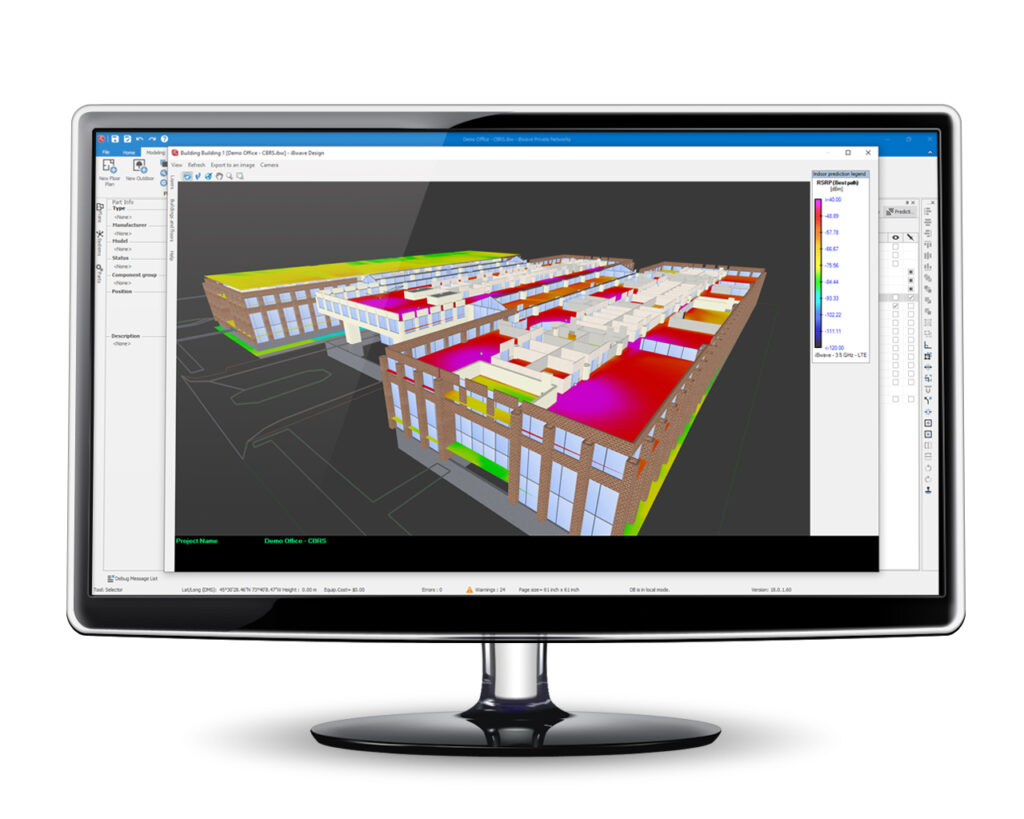Building a Private Network: Step by Step
Share

In today’s digitally driven world, establishing a private network is a strategic move for many enterprises. The demand for seamless, secure, and reliable connectivity has led organizations to explore the benefits of owning and controlling their network infrastructure. This comprehensive guide will take you through the process of building a private network, emphasizing the significance of each step.
Understanding Private Networks
Before delving into the steps of building a private network, let’s clarify what exactly a private network entails. A private network, in the realm of wireless communication, is an exclusive network infrastructure owned, operated, and managed by a single entity, typically an organization or enterprise. These networks differ significantly from public networks like Wi-Fi hotspots or cellular networks.
Why Enterprises Choose Private Networks
- Enhanced Security: Security is paramount in the digital age. Private networks offer a heightened level of security by encrypting data transmission, mitigating the risks of unauthorized access and data breaches.
- Reliable Connectivity: Private networks allow organizations to maintain control over network traffic, ensuring consistent, reliable connectivity even in high-demand scenarios.
- Low Latency: For applications requiring minimal delay, such as real-time video conferencing and industrial automation, private networks can be optimized for low-latency communication.
- Customization and Control: With private networks, enterprises enjoy complete control over network design, configuration, and management, enabling tailor-made solutions to meet specific needs.
Read about the importance of Private 5G for Enterprises in our blog!
Key Components for Effective Deployment
Successful deployments of private networks demand meticulous planning and execution. Essential components and considerations include:
- Spectrum Allocation: Allocate the appropriate frequency spectrum to your private network to prevent interference and maximize performance.
- Infrastructure Investment: Invest in high-quality network equipment, including access points, switches, and routers, to support your network’s capacity and coverage requirements.
- Security Measures: Implement robust security protocols, such as firewalls, intrusion detection systems, and encryption, to safeguard your network from potential threats.
- Scalability: Design a network that can easily accommodate future growth, ensuring that it remains adaptable and cost-effective.
Main Use Cases and Verticals
Private networks find applications across various industries and verticals:
- Mining: Private networks in mining optimize operations, providing real-time data, safety, and control in remote and rugged environments.
- Manufacturing: In manufacturing, private networks support automation, process efficiency, and quality control, ensuring seamless production processes.
- Energy: Private networks in the energy sector enhance grid management, enable smart meters, and bolster renewable energy integration.
- Oil & Gas: In the oil & gas industry, private networks ensure secure communications, asset tracking, and monitoring in remote and hazardous locations.
- Education: Educational institutions benefit from private networks by delivering high-speed internet access and supporting e-learning initiatives.
- Healthcare: Private networks in healthcare enable secure patient data management, telemedicine, and real-time communication among healthcare professionals.
- Transportation & Logistics: The logistics and transport industry is transforming as a result of a wide variety of industry trends and challenges. These drive demand for 5G both directly and indirectly.
Step-by-Step Guide to Building a Private Network
1. Site Survey: The Foundation
A site survey is pivotal for private network success. It involves a comprehensive assessment of the physical environment, including aspects like building layout, materials used, and potential sources of interference. The data collected during this critical phase forms the bedrock upon which the entire network deployment rests. It ensures that subsequent design decisions are well-informed, guaranteeing that the network meets the exacting requirements for both coverage and performance.

2. Evaluation/Feasibility: Setting Realistic Expectations
Before taking the leap into network deployment, it’s essential to conduct a feasibility study. This study is a reality check for your private network project. It takes into account various factors, including budget constraints, regulatory requirements, and the availability of skilled personnel. By conducting this in-depth analysis, you can make informed decisions and set realistic expectations for your project’s scope and timeline.
3. Network Design: The Heart of the Project
The network design phase is where the magic happens. It’s the heart of your project, where you define the architecture, topology, and capacity of your private network. During this critical phase, the careful placement of access points, antennas, and other network components is meticulously planned. The goal is to ensure not only optimal coverage but also peak performance. A well-thought-out network design sets the stage for achieving your connectivity goals and lays the foundation for seamless network operations.

4. Cost Calculation: A Clear Budget
Budgeting is a crucial aspect of private network deployment. It’s essential to calculate the total cost of ownership (TCO) accurately. This includes accounting for equipment costs, installation expenses, ongoing maintenance, and operational costs. Having a well-defined budget is not just about financial planning; it’s about securing the necessary funding and allocating resources effectively. It ensures that your private network project remains on track, both financially and operationally.
5. Network Deployment: Turning Plans into Reality
After meticulous planning, it’s time to turn your network design into a tangible reality. During the deployment phase, you’ll install and configure network equipment as per the design plan. This is the hands-on phase where the blueprint comes to life. It’s imperative that all components function correctly, and the network meets the specified performance criteria. Effective network deployment is the bridge that connects planning to real-world functionality.
6. Testing: Ensuring Reliability
Comprehensive testing is the litmus test for your private network. It’s not enough to have a network; you must ensure it performs flawlessly. Testing covers various aspects, including coverage, capacity, and reliability under different conditions. It’s during this phase that any issues are identified and addressed promptly. Thorough testing guarantees that your network is not just functional but reliable and capable of meeting the demands placed upon it.
7. Monitoring and Maintenance: Sustaining Excellence
Network deployment is not the end; it’s a continuous journey. Once your private network is operational, it’s crucial to establish a routine for monitoring and maintenance. Regularly monitoring network performance, addressing issues promptly, and applying updates and security patches are all part of sustaining a secure and reliable network. This ongoing vigilance ensures that your network remains in peak condition, delivering the excellence it was designed for.
Leveraging iBwave for Network Excellence
As you embark on the journey of building a private network, consider the invaluable support provided by iBwave, a leading expert in wireless network survey and design. iBwave offers high-quality tools and software that simplify the network design and survey process, elevating the accuracy and efficiency of your network deployment.
By utilizing iBwave’s solutions, you can ensure that your private network is designed and implemented to the highest standards, bolstering your confidence in its connectivity capabilities. You can either use iBwave Private Networks to seamlessly design your Private LTE, 5G and Wi-Fi Networks or iBwave Design for designing more complex venues! With iBwave, you get everything you need to plan and deliver reliable indoor and outdoor campus private networks under one roof. Learn more about our solutions here!

Conclusion
Building a private network demands meticulous planning and execution, with each step playing a pivotal role in its success. Private networks offer enhanced security, reliability, low latency, and customization, making them an ideal choice for various industries and applications. Whether you operate in manufacturing, healthcare, education, utilities, or any other sector, a well-designed private network can revolutionize your connectivity capabilities, supporting your enterprise’s growth.
Remember that iBwave’s advanced tools and software significantly streamline the network design and survey process, ensuring the highest quality results for your private network deployment. Armed with the right approach and the right tools, your private network will become a formidable asset, providing the connectivity essential for thriving in today’s digital age.
Remember that iBwave’s advanced tools and software significantly streamline the network design and survey process, ensuring the highest quality results for your private network deployment. Armed with the right approach and the right tools, your private network will become a formidable asset, providing the connectivity essential for thriving in today’s digital age.
Visit our blog page to learn more about wireless networks and how to design them efficiently!
- Making Smart Cities Smarter: The Role of Private Wireless Networks - January 25, 2024
- Building a Private Network: Step by Step - September 12, 2023
- What are the International Differences in Private Networks? - August 10, 2023

















